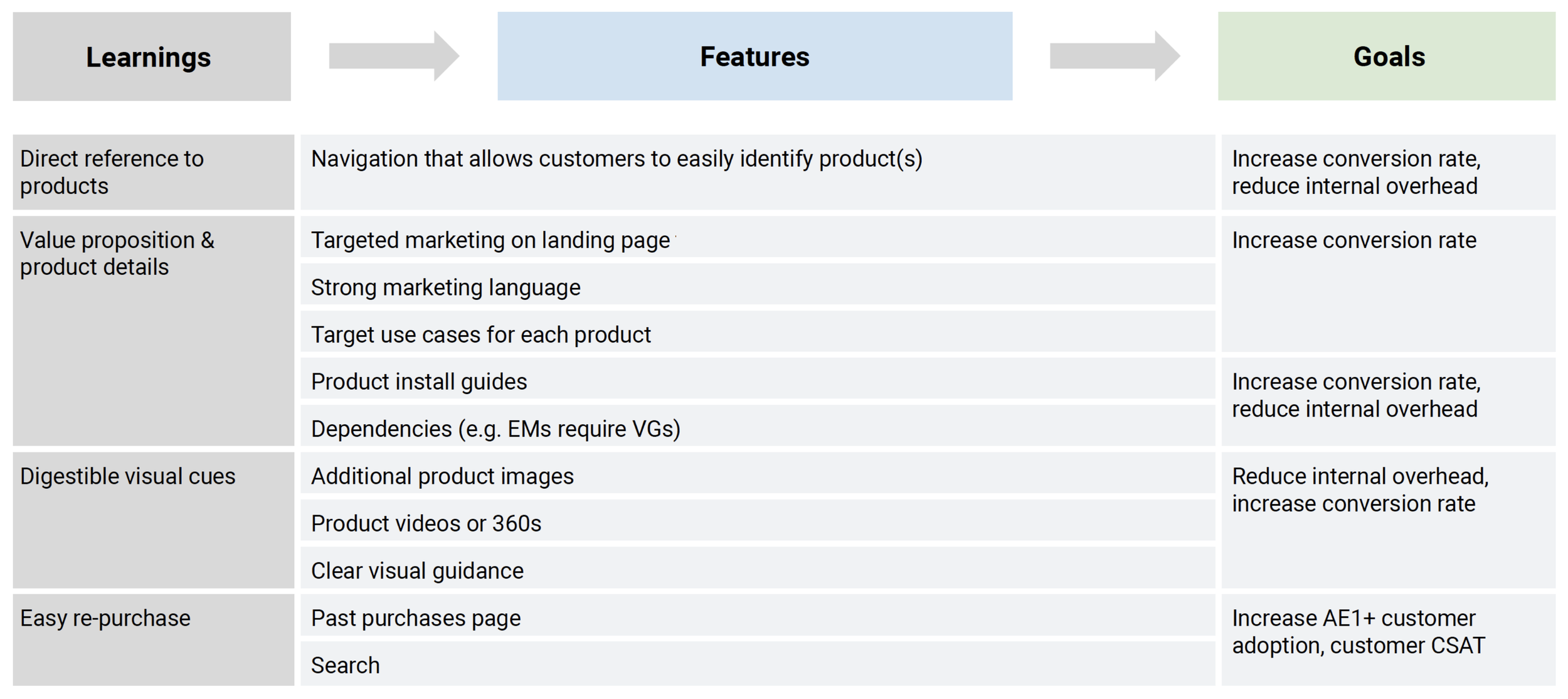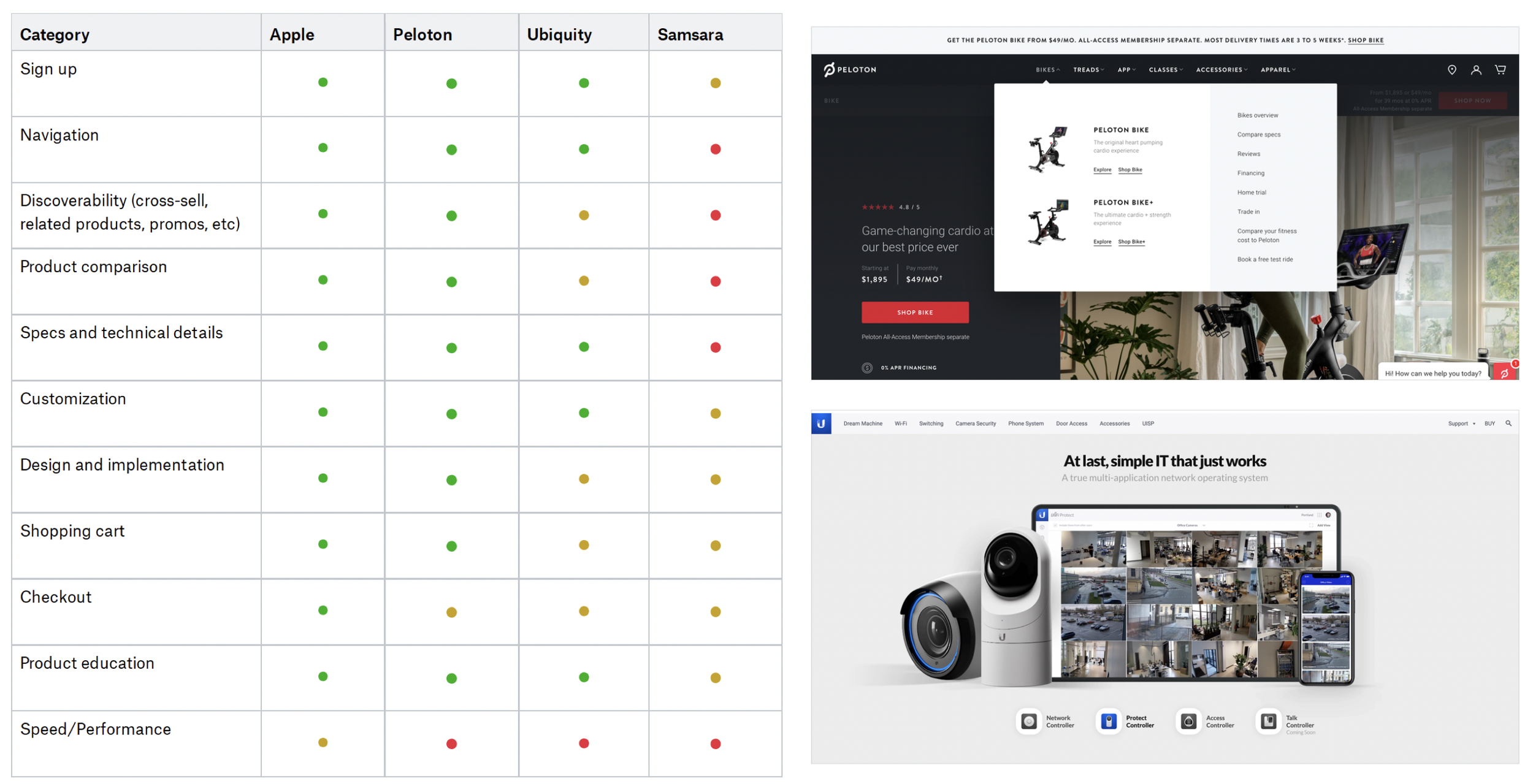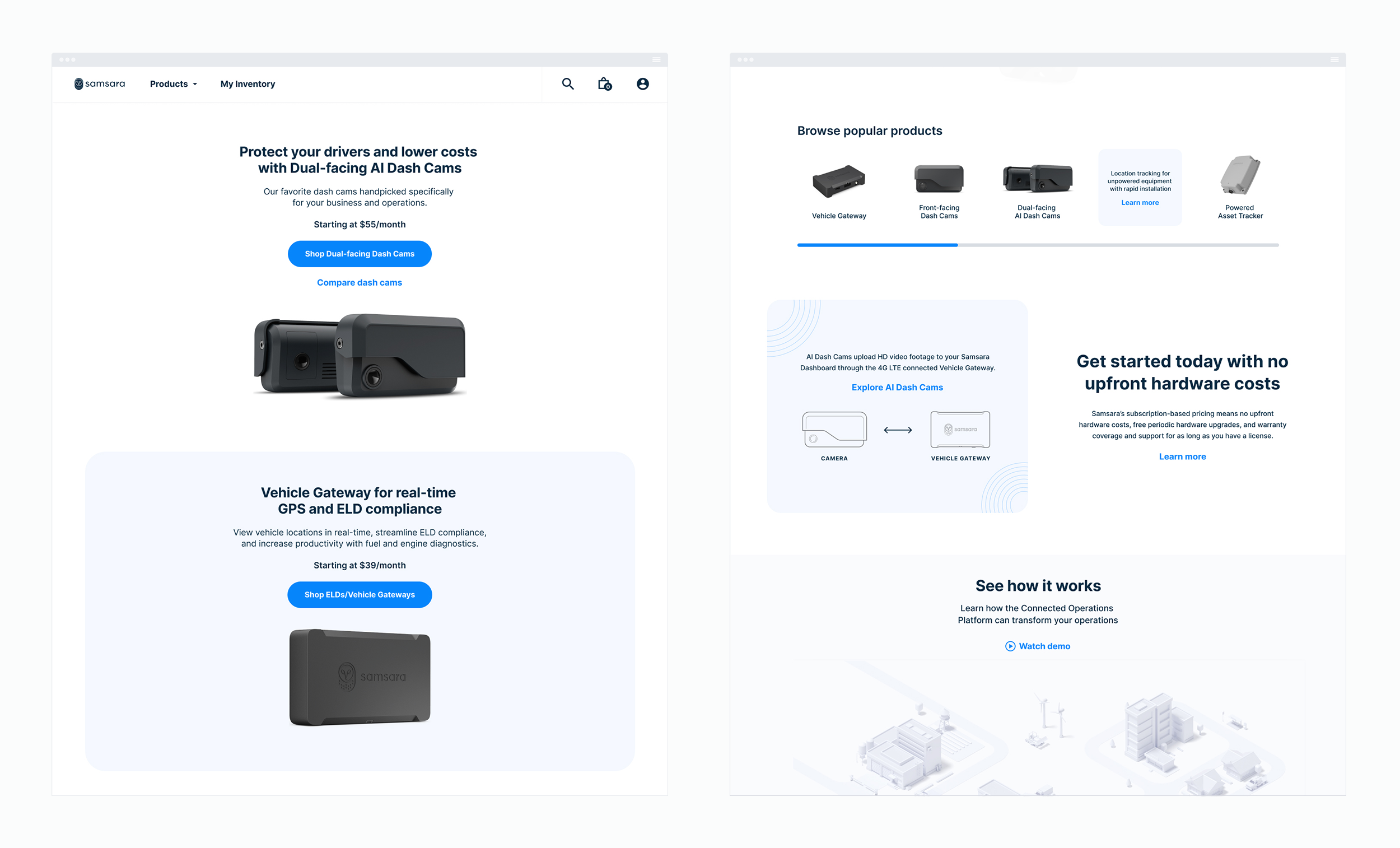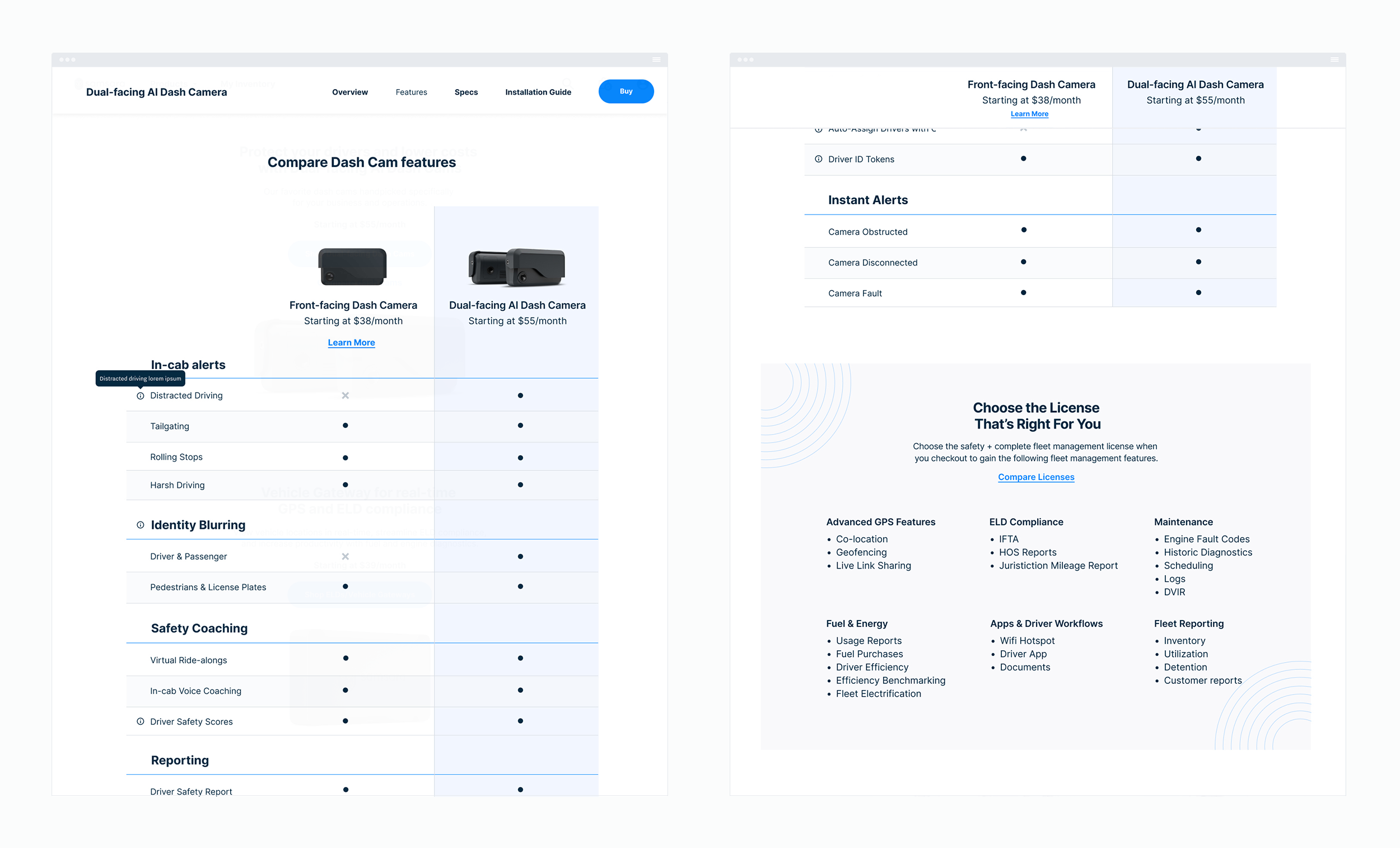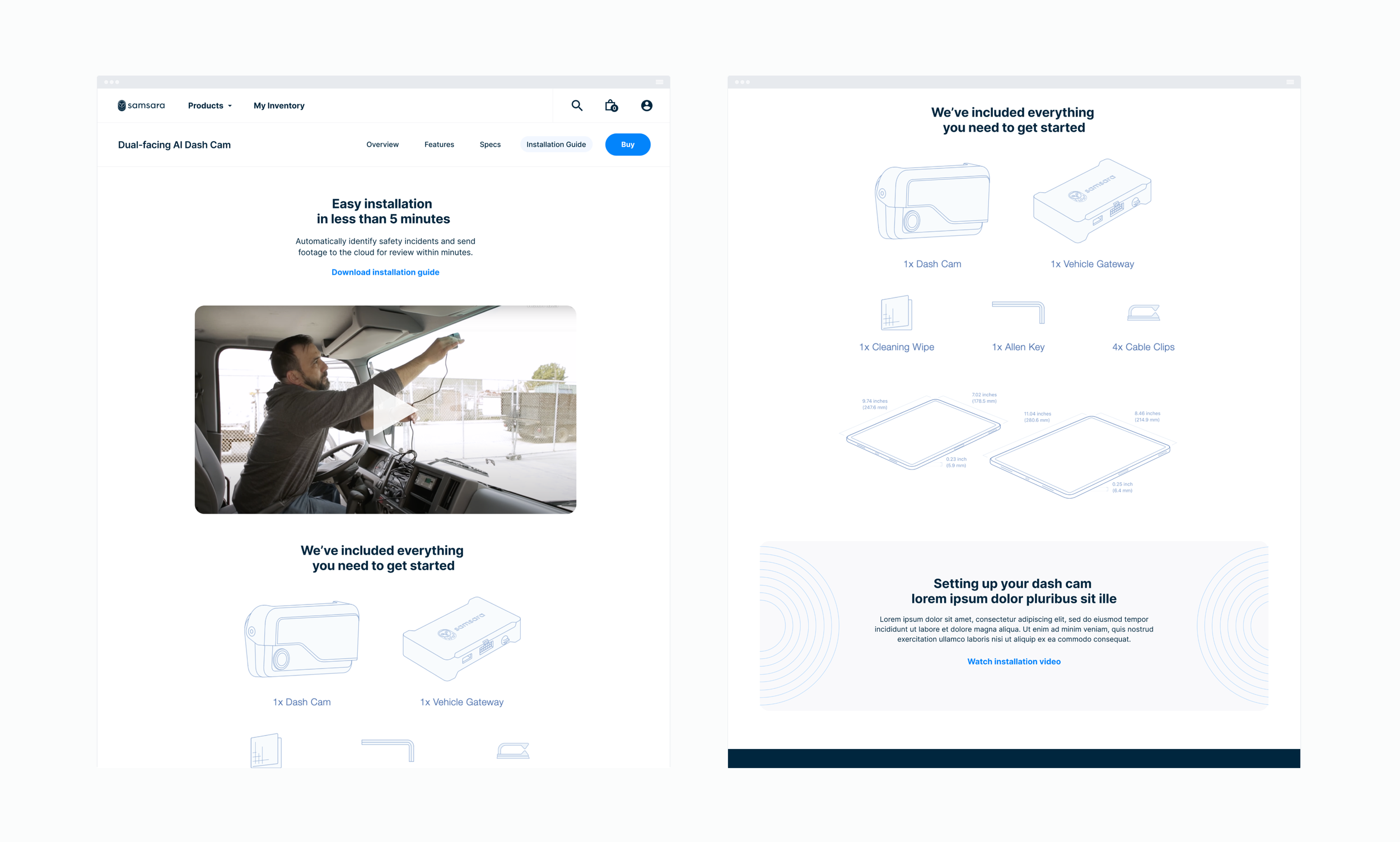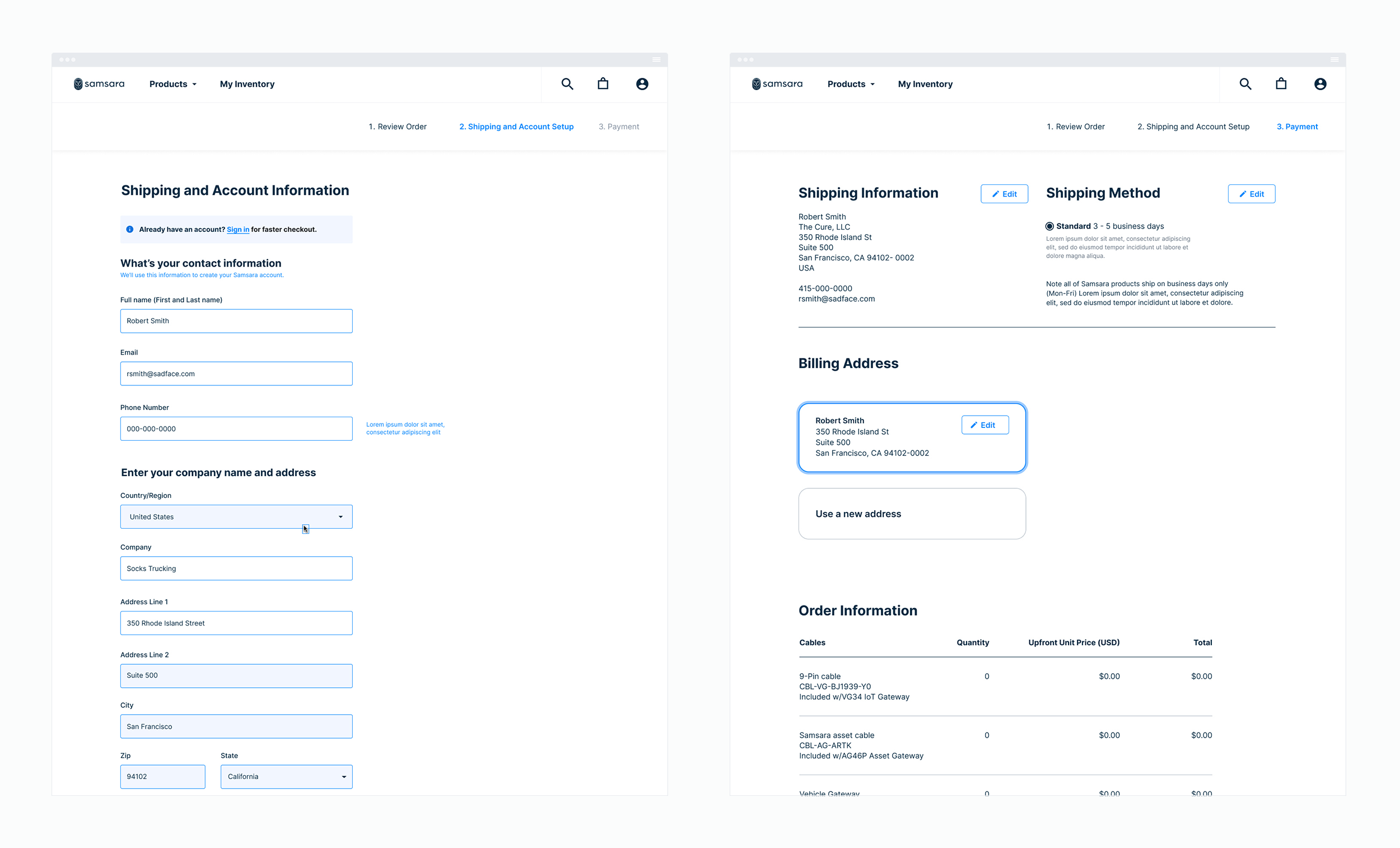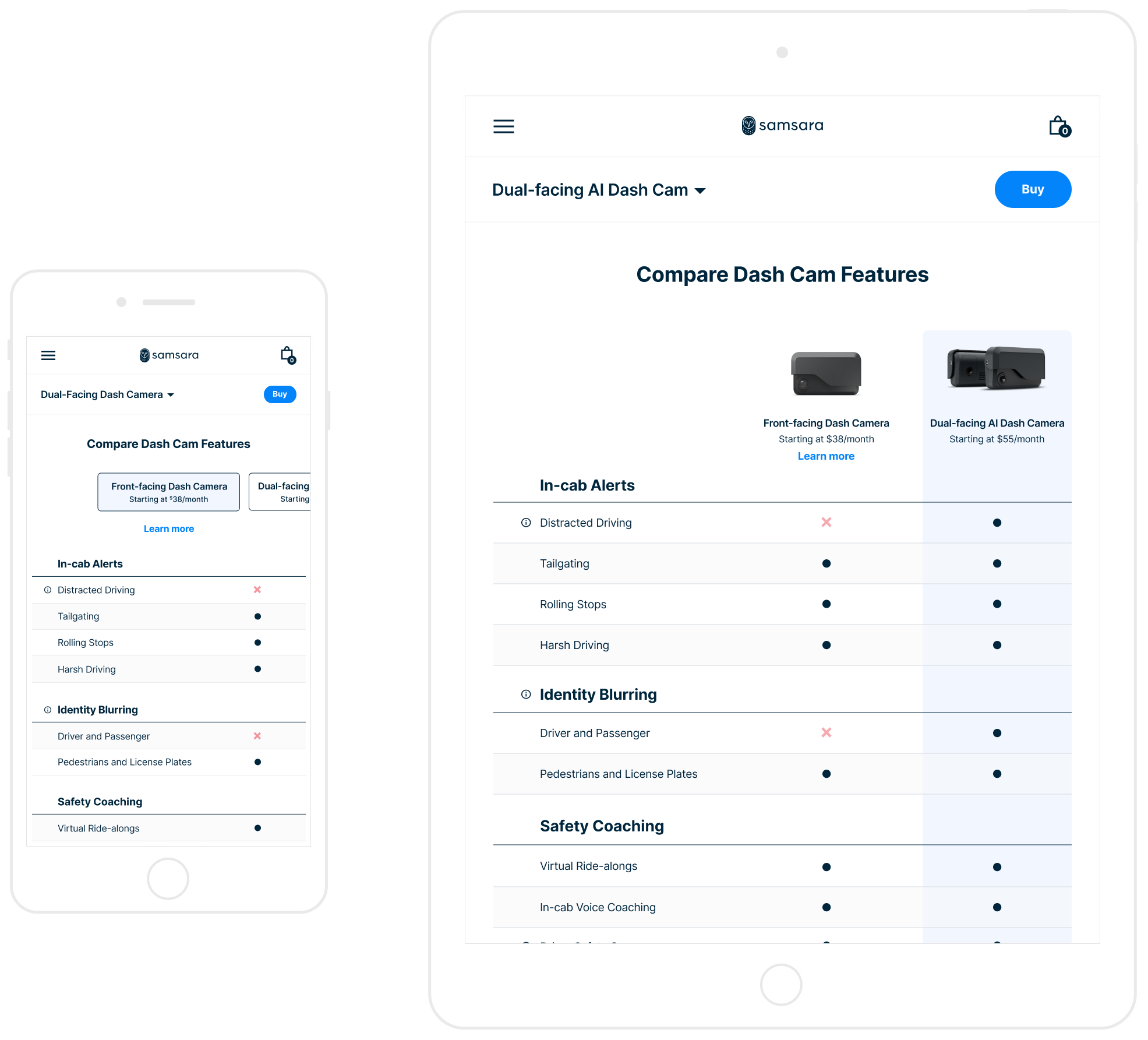Tripling Web Conversion for Samsara’s Webstore
I led design research, strategy, and execution for Samsara’s webstore redesign. Framing the problem around customer confidence and operational efficiency, was key to aligning executives and transforming the MVP into a mature e-commerce platform.
OBJECTIVE
Accelerate passive revenue generation across a broader range of new and existing customers
PROBLEM
As Samsara prepared for IPO, ongoing Webstore pain points led to high support volume, blocked sales, and manual admin for sales reps.
HYPOTHESIS
A fully self-service shopping experience — with intuitive navigation, clear value propositions, upsell, guided purchase flows — would increase customer confidence, accelerate net-new conversions, and reduce operational overhead.
USERS
New customers
Sales prospects learning about Samsara’s product offering to make a sign-up decision
Existing customers
Admins purchasing replacement and add-on devices for fleets with active accounts
APPROACH
• Validated navigation options (guided, product family, purchase-type) to improve discoverability and resolve internal debate.
• Relied on evidence-based decision-making to keep alignment focused on shared goals, customer insights, and target metrics.
• Navigated project management challenges with curiosity, transparency, and empathy.
SOLUTIONS
• Launched new navigation that gave customers clearer shopping paths and aligned stakeholders on a single, data-backed option.
• Conducted qualitative and quantitative research to anchor features in user needs and business goals.
• Implemented process improvements — introducing design plan and PRD alignment, slack standups, XFN timelines, and milestone-hypothesis mapping — to unblock kickoff.
RESULTS
• Tripled conversion rate: 1.8% → 5.35%.
• Increased add-on adoption: 20% baseline → 26.1%.
• Raised CSAT: 89 → 93, surpassing the 85 goal.
• Reduced admin workload by 14%
• Reduced system errors: 2% → 0.94%
TAKEAWAYS
• Cross-functional alignment was critical — buy-in from co-founders and ten teams set the pace and impact of delivery.
• Communication and process improvements replaced ad-hoc execution, creating the structure to scale efficiently, move quickly, and collaborate across orgs.
• Making research accessible across teams built credibility and turned user insights into a common language for decision-making.
NEW WAYS OF WORKING
Aligning the Design Plan and PRD; drafting a XFN timeline; and mapping milestones and hypothesis to test helped us navigate project management challenges.
A SHARED KNOWLEDGE-BASE
Cross-functional participation in interviews (live and async) built trust with new contributors, deepened our understanding of the end-to-end journey, and established a solid, shared evidence base for product and design decisions.
RESEARCH-DRIVEN ROADMAP
Customer insights informed the MVP feature set, with each feature tied directly to success metrics related to conversion, adoption, and efficiency.
NEW CUSTOMER JOURNEY
Future State - Customer calls highlighted nuances in the admin mindset during the pre-store, in-store, and post-checkout experience.
COMPETITIVE BENCHMARKS
I used our research insights, a best in class competitive audit, and success metrics as inspiration for the design principles and recommendations for MSCW feature improvements.
DESIGN
The new store interprets the end-to-end customer experience through a B2B and B2C lens. Each step in the shopping journey is designed to be useful and desirable. We created a personalized experience that relies on simplicity and in-store education to guide users throughout the in-store journey.
In-store education: responsive feature comparison tables help users make informed purchase decisions.
Add to bag: instructional text and learning cues guide users through each step of license and cable selection
VIN cable selection: Any functionality improvements to the VIN required significant backend changes. The work was well-received but deprioritized due to cost.
Company: Samsara Timeline: 8 weeks for design planning, research, strategy, and execution Core contributors: Lancy Zhang (Product Manager), Will Ginsberg (Senior Engineering Manager), Andrew Ackermann (Design Director), Max Reconeret (VP of Growth), Rohan Marahwa (Growth Experimentation) and Grayson Yokota (Senior Brand Designer) Stakeholders: Dana Chery (VP of Product Marketing), Janu Flores (Creative Director), MacKenzie Ring (Senior Global Sales Manager), Priscilla Liu (Marketing Manager), and Andrew Deagon (Senior Hardware Manager)

